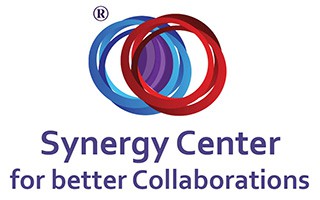There are three conditions (axes or dimensions) for synergy to occur: diversity, boundary and communication. Diversity is, in a sense, a requirement for synergy. Therefore, it is out of the question to consider assimilating synergistic interactions or the language of synergy in an organization where all elements are uniform or same.
In fact, in view of twenty-first century and postmodern organizations, homogeneity is almost non-existent. Diversity has an unconditional support for synergy, but boundary and communication, depending on their type, can either promote or discourage synergy. This is because boundary and communication affect the quality of interactions.
For synergy to happen, boundary and communication conditions must be favorable. A flexible boundary and fusion communication favor synergy. However, when a boundary is either blurred or rigid, and communication is either one-way or two-way, it can be difficult to assimilate a language of synergy, even if diversity is present.
Dr. Rami Ben-Yshai, in his book Organizational Synergy: A Practical Guide – Recalibrate Interactions to Achieve Peak Engagement, Productivity & Profit, states that, at any given instance in an organization, seven forms of interactions exist. The quality of these forms of interactions depend on what type of boundary and communication are present in an organization.
The Seven Forms of Interactions
They fall into three groups or categories:
- Quality interactions: 1) interdependent, 2) synergistic, and 3) interfaced.
- Neutral interactions: 1) hierarchical, 2) none.
- Destructive interactions: 1) Invasive, 2) obscure.
How Communication Affects the Quality of Interactions
If diverse parties are already disagreeing, one-way communication, in which one party sends a message without regards to the opinion or views of another party, can worsen the dispute, leading to conflicts. One-way communication is also a way of making boundaries more rigid, and it arises out of the perception that another party poses threats to one’s way of doing things and worldview.
If one party perceives that another party threatens to invade their space, conflicts are bound to happen. Therefore, the quality of interactions reduces. And when the quality of an interaction is poor, synergy can’t take place.
Two-way communication, in which both parties exchange information, ideas, opinions or views, can improve the quality of interactions, but it may not be enough to initiate synergy. A higher quality of interaction must occur for synergy to happen, but that’d require guidance of laws, work processes and ethics.
This guidance can help foster empathy, recognition of existence of diversity and listening, the ingredients, which make the quality of interactions to occur at a higher level. When these conditions exist, synergy happens, and parties can fuse together to create a new reality.
How Boundary Affects the Quality of Interactions
The quality of an interaction between diverse parties can improve if they flex (or “recalibrate”) their boundaries or territories. However, flexing (or recalibrating) boundary requires setting aside ego and the external factors such as unionization, stiff competition, delegation of power, work or responsibility based on hierarchy, mind-set differences, etc. When a boundary is flexible, it’s easier to define it, diverse parties can work mutually to achieve a common purpose. The parties must be happy and comfortable to work within their boundaries.
It’s important to note, though, that flexible boundaries can transform into unclear, undefined or “blurred” boundaries, especially if changes between the parties occur much more frequently and faster. With blurred boundaries, the risk of disagreements and conflicts are significant, and this can affect the quality of interactions; hence, synergy.
At any point in time, all types of boundaries exist at the same time. Such coexistence confuses employees and managers of organizations. In addition, people perceive boundaries differently in an organization; hence, it’s a challenge to find a balance between the three types of boundaries, because perception is subjective.
In Summary…
There seven are forms of interactions that exist together at any given moment in any given organization. To that, add to the fact that all types of boundaries – flexible, rigid and blurred – coexist. Such coexistence is relative; it’s subjective, because it depends on what degree of boundary clarity an employee or manager perceives. The quality of interactions depend on the type of boundary and communication.





live roulette mobile
10 Sep 2018My partner and I stumbled over here coming from a different web address and thought
I should check things out. I like what I see so now i’m
following you. Look forward to going over your web page repeatedly.
토토사이트추천
10 Sep 2018Great post.
카지노사이트
11 Sep 2018When someone writes an post he/she retains the image of a user in his/her brain that how a user can be aware of it.
So that’s why this post is outstdanding. Thanks!
토토사이트
11 Sep 2018Simply desire to say your article is as astounding.
The clearness in your post is just spectacular and i
can assume you’re an expert on this subject.
Well with your permission let me to grab your
feed to keep updated with forthcoming post.
Thanks a million and please carry on the rewarding work.
live 22
11 Sep 2018Way cool! Some extremely valid points! I appreciate you writing this article
plus the rest of the site is also very good.